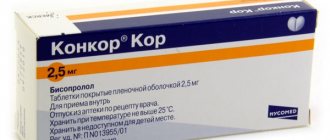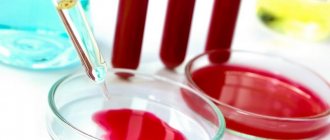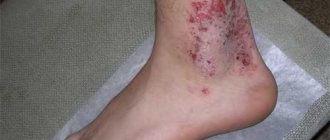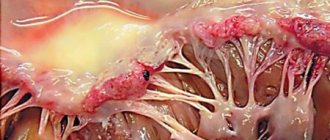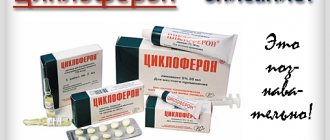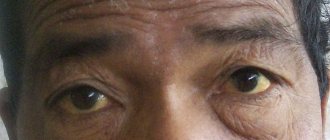Treatment of arthritis: NSAIDs, biological drugs, enzyme therapy
Treating arthritis is a challenging task for even the most qualified rheumatologist.
In this article we will consider modern methods of treating various forms of joint inflammation. There are innovative solutions in rheumatology, but they are introduced into the practice of doctors only in some developed countries.
You can learn more about arthritis in the article: Arthritis: symptoms, causes and prevention.
Statistics have shown that biological drugs for rheumatoid arthritis are several times superior to the traditional drugs used by our doctors to treat the disease. So, first things first.
Other medicines
In some cases, gonarthritis develops against the background of tuberculosis, psoriasis, gout, microcrystalline arthropathy, osteoarthritis, allergic, autoimmune and other diseases. Inflammation of the knee joint can be caused by injuries, vaccinations, blood diseases, etc.
Rare types of pathologies usually require the use of special drugs. Doctors select them taking into account the cause and nature of the inflammation. Such medications should treat the disease that triggered the development of gonarthritis. For example, for tuberculosis the patient is prescribed anti-tuberculosis drugs, for gout - drugs that affect the metabolism of uric acid, for allergies - antihistamines and corticosteroids, etc.
Classic treatment of rheumatoid arthritis
Classic treatment of rheumatoid arthritis is based on the use of non-steroidal anti-inflammatory drugs (ibuprofen, aspirin) and disease-modifying rheumatic factors (methotrexate, sulfasalazine).
Among the existing anti-inflammatory drugs, even a qualified doctor finds it difficult to choose an effective medicine with minimal side effects. As a result, the approach to treating the disease is individual for each patient.
Classical treatment of arthritis is complex and is based on the following methods:
- Limiting labor and reducing the load on the damaged joint (bed rest);
- Increasing the dietary content of phosphorus, calcium and vitamin D3 (consumption of fish, dairy products);
- For arthritis of the feet and ankles, it is rational to prescribe orthopedic insoles and proper shoes (to prevent flat feet);
- NSAIDs are taken strictly on the recommendation of a doctor (they provoke intestinal ulcers) together with gastric secretion blockers (misoprostol, omeprazole).
Popular anti-inflammatory drugs for treating arthritis
Let's review some popular anti-inflammatory drugs.
Ibuprofen in experimental studies has shown high effectiveness in eliminating inflammation with minimal side effects. The drug can be used to treat chronic joint pain. In case of acute pain syndrome, it must be combined with analgesics (analgin, baralgin). Ibuprofen (Nurofen) has been used in the treatment of arthritis for more than 40 years and during this time has not caused serious complications in patients. In many countries around the world it is sold in pharmacies without a doctor's prescription.
You need to understand that the advantage of therapeutic action over complications when taking the medicine is observed only when used for less than two weeks at a daily dose of no more than 3 tablets.
Ketoprofen is considered by many rheumatologists to be a high-quality alternative to ibuprofen. The positive therapeutic effect of this remedy on arthritis is due to the peculiarity of its molecular structure. The molecules of the drug penetrate well into inflammatory tissues, accumulate in the intra-articular fluid, and therefore provide a long-term therapeutic effect.
Of great importance is the ability of ketoprofen to penetrate the brain through the blood-brain barrier. Because of these properties, the medicine can be used in the treatment of arthritis with concomitant damage to nerve fibers. Some studies provide evidence that the drug activates the serotonergic system of the brain, which helps reduce irritability in patients with asthenovegetative syndrome that occurs against the background of autoimmune arthritis.
Attention! Ibuprofen and ketoprofen are not without side effects characteristic of all non-steroidal anti-inflammatory drugs (NSAIDs), so they need to be taken in short courses (up to 2 weeks) with subsequent breaks.
Overdose
The patient has an increased risk of overdose with long-term use of the drug in high doses, with functional failure of the kidneys and/or liver.
Signs of overdose include:
- increased blood pressure;
- edema syndrome;
- increased side effects of the drug.
Therapeutic tactics for acute overdose: evacuation of gastric contents (gastric lavage), administration of sorbents (activated carbon).
In case of chronic overdose (the occurrence of undesirable effects), the dose of Prednisolone should be gradually reduced.
B vitamins for joint inflammation
Numerous studies have shown an increase in the effectiveness of treatment of spondyloarthritis (inflammation of the joints of the spine) with the combined use of NSAIDs and B vitamins:
For chronic diseases of the spine, such drugs are prescribed to improve the functionality of the nervous system, restore metabolism, and reduce pain. Clinicians who use B vitamins in patients with arthritis of the joints, including arthritis of the jaw joint, note an acceleration in the time to achieve remission of the disease when these drugs are combined with non-steroidal drugs.
Neurobinon is a medicine containing therapeutic dosages of vitamins B1, B6 and B12. Its positive effect on joint inflammation is due to the following properties:
- Thiamine reduces nervous excitability, therefore reducing joint pain;
- Pyridoxine improves the metabolism of sphingolipids (substances necessary for the functionality of nerve fibers), stimulates the flow of nutrients into the osteoarticular system by improving the metabolism of amino acids;
- Cyanocobalamin is necessary for the normal functioning of red blood cells and improves the activity of brain neurons.
Thus, it is advisable to supplement the classical treatment of arthritis with non-steroidal anti-inflammatory drugs with B vitamins. This combination will not only speed up the healing time of inflammatory changes in the joints, but also alleviate the condition of the patient who has complications of arthritis from the nervous system.
pharmachologic effect
Prednisolone is prescribed as an anti-inflammatory, antiallergic, immunosuppressive, antitoxic and antishock agent.
When using the drug, the formation of adrenocorticotropic hormone in the pituitary gland and the synthesis of endogenous (own) glucocorticosteroids are reduced. The drug causes changes in protein, fat, carbohydrate, water and salt metabolism.
Prednisolone causes:
- increased protein breakdown;
- hyperproduction of higher fatty acids with triglycerides and cholesterol;
- redistribution of subcutaneous fat (under the influence of the hormone, fat deposits accumulate on the face, shoulder girdle, and abdomen);
- increased absorption of carbohydrates in the digestive tract;
- decreased absorption of calcium during digestion;
- bone demineralization (osteoporosis);
- hyperproduction of glycogen in liver cells;
- decrease in eosinophils, lymphocytes, neutrophils;
- retention of sodium and water in blood vessels;
- excretion of potassium.
How to treat autoimmune arthritis
Autoimmune arthritis (rheumatoid, juvenile) creates difficulties in treatment due to the fact that they arise against the background of the formation of antibodies against the cells of one’s own body. There are drugs, for example, methotrexate or sufasalazine, that can stop this process, but blocking the synthesis of immunoglobulins will result in the body being unable to fight viral and bacterial infections. Against this background, treatment with antirheumatic disease-modifying drugs can be carried out only for severe forms of arthritis and only with moderate doses of antibody-blocking drugs.
Methotrexate is considered the gold standard for the treatment of autoimmune arthritis. It has an immunosuppressive effect in lower dosages than its analogues, therefore it is less safe for the human body. The drug belongs to the group of folate blockers, therefore, to reduce side effects, it is rational to use folic acid in a dose of up to 5 mg per day.
There is an opinion that sulfasalazine is not significantly different in toxicity from methotrexate, so it is also prescribed for rheumatoid arthritis. However, methotrexate is more common for autoimmune joint inflammation. Only when there is no effectiveness from treatment with this drug, combined regimens are used:
- Methotrexate with sulfasalazine;
- Methotrexate and hydroxychloroquine;
- Methotrexate and leflunomide.
Does immunomodulation help with arthritis?
Immunomodulation for arthritis helps by inhibiting antibodies that affect the articular surfaces. Obviously, their use is rational only for autoimmune inflammation.
The use of this method is based on the fact that adrenal hormones (corticosteroids) can suppress the immune system. When used, the production of immunoglobulins against one's own cells is reduced.
Therapy with these drugs has a large number of side effects, so it is carried out only when absolutely necessary.
An analogue of glucocorticoid hormones is cyclosporine. This medicine has fewer side effects. The choice of an immunomodulator is the task of a qualified specialist. If the dose or duration of use of prednisolone or cyclosporine is chosen incorrectly, the patient will experience serious hormonal disorders and complications from internal organs.
Biological drugs for arthritis – the latest “fashion”
Biological drugs effectively treat arthritis in developed European countries. Due to the high cost, our inpatient medical institutions still “can only dream of” such medications.
What are biological drugs
Biological preparations contain biological agents that act on important pathogenetic links of diseases. For example, in rheumatoid arthritis, bacteriophages are used to prevent the formation of inflammatory substances (cytokines and tumor necrosis factor).
Some medications of this type eliminate blood toxicity that occurs during bacterial infections (including streptococcal infections). Anti-CD4 agents are widely used in Israel. They block the activity of T-lymphocytes, which are the main source of antibody formation in rheumatoid arthritis. After the phage binds to the lymphocyte, immunoglobulins that destroy joint tissue are not formed.
There are bacteriophages that affect other parts of the pathological process. For example, biological tissue suppression agents (TIMPs) block the activity of tissue collagenases (enzymes that break down cartilage tissue). If such biological drugs are used for a long time, the transformation of arthritis into arthrosis is prevented, which is always observed with prolonged inflammation of the joint.
Read also: Disease arthritis
However, in practice, the use of TIMPs also has side effects. Blocking collagenases is accompanied by the occurrence of bursitis and tendon synovitis, since the enzymes do not remove the dead epithelium of the inner lining of the ligaments.
How to treat arthritis with biological drugs
In some scientific institutions of our country under the Russian Academy of Medical Sciences, children with rheumatic diseases are treated with biological agents. More precisely, so far only one drug is used for these purposes - Enbrel (etanercept). This remedy has shown good effectiveness in the treatment of rheumatoid arthritis in children in practice in the USA and Europe.
Features of the treatment of rheumatoid arthritis with etanercept:
- High efficiency with a minimum of side effects;
- Subcutaneous administration 2 times a week;
- Not addictive;
- Can be prescribed to children from 4 years of age;
- Lack of effect from the drug in forms of the disease that are insensitive to NSAIDs and immunomodulators.
Obviously, the emergence of biological agents does not fundamentally change the traditional understanding of the treatment of autoimmune inflammation of the joints. Such drugs should be used in combination with classical drugs to increase the effectiveness of therapy and reduce the duration of the disease.
In 2011, another biological drug appeared in Russia – Actemra (tocilizumab). It is intended for the treatment of juvenile arthritis in children over 2 years of age with moderate to high activity of the pathological process. The mechanism of the therapeutic effect of the drug is aimed at blocking receptors for one of the inflammatory mediators - interleukin 6 (IL-6). This substance activates the inflammatory process, so when its activity is inhibited, swelling in the joint decreases. When used regularly, the drug allows the patient to return to work, but, theoretically, increases the risk of malignant tumors. Interleukin 6 provokes an inflammatory process so that the body can get rid of destroyed tissues, which, without destruction by the immune system, can turn into a malignant tumor by acquiring the ability to reproduce uncontrollably.
Another biological drug used in the treatment of rheumatoid arthritis is rituximab. It contains antibodies to B-lymphocyte receptors obtained by genetic engineering. When using the drug, lymphocytes responsible for the production of antibodies to joint tissues die, but the rudimentary forms of cells responsible for the immune response are not destroyed. This mechanism of action is due to selective damage to lymphocytes containing CD-20 receptors.
Diagnostics
To make a diagnosis such as rheumatoid arthritis, it is important to take into account both clinical manifestations and indicators of laboratory tests and instrumental studies (which we will talk about below).
To take into account clinical symptoms, the American College of Rheumatology released criteria specific to this disease back in 1987:
- Feeling of stiffness in joints in the morning for at least one hour.
- Inflammatory changes (swelling, pain, redness, local increase in temperature) in at least three joints.
- Damage to the joints of the hands (formation of the so-called rheumatic hand).
- Symmetry in the defeat of small joints.
- The presence of subcutaneous, dense formations (rheumatoid nodules) in the periarticular areas or on the extensor surfaces of the limbs.
- Detection of rheumatoid factor in blood serum.
- The presence of a characteristic x-ray picture of rheumatoid arthritis: the presence of erosions, osteoporosis, narrowing of the joint space, and at the last stage - ankylosis.
The diagnosis is established based on the presence of at least 4 points out of 7 presented, according to the protocol. Using this scale, you can determine the type of rheumatoid arthritis: seronegative or seropositive. This is determined by the presence or, conversely, absence of RF and/or ACCP in the blood serum.
In addition to recording the clinic, it is important to perform the following laboratory tests included in the diagnostic protocol:
- A general blood test, which in rheumatoid arthritis is characterized by: normo- or hypochromic anemia, neutropenia, high numbers of ESR and C-reactive protein (acute-phase indicators, the presence of which indicates a pronounced inflammatory process in the body).
- General urine analysis. With arthritis, indicators may be within normal limits.
- Biochemical blood test, namely ALT, AST, CRP, urea, creatinine. These indicators will give a picture of the condition of the liver and kidneys, which can also be affected by rheumatic pathology.
- Rheumatoid factor, anticitrullinated antibodies. Indicators specific for rheumatoid arthritis. However, their absence does not exclude this diagnosis.
- Antinuclear antibodies, anti-HCV, HBsAg, antibodies to HIV for the purpose of differential diagnosis and to determine contraindications to drug therapy.
- X-ray of hands and feet in direct projection.
- Fluorography of the lungs (according to standard).
In addition, the European League Against Rheumatic Diseases (EULAR) offers its 2010 clinical indicators for rheumatoid arthritis, which is actively used in the modern practice of rheumatologists:
| Criteria | Points |
Clinical signs of joint damage (swelling and/or tenderness on physical examination):
| 0 1 2 3 5 |
Tests for rheumatoid factor and anticitrullinated antibodies:
| 0 2 3 |
Acute phase proteins (ESR and CRP):
| 0 1 |
Duration of edema and swelling of the joint:
| 0 1 |
The survey and scoring according to this system is carried out by a specialist. If there are 6 or more points, the doctor has the right to make a diagnosis of rheumatoid arthritis according to the standard.
Enzyme therapy in the treatment of arthritis
Enzyme therapy is based on the proven fact that any pathological process at the cellular level leads to disruption of the interaction between intracellular and intercellular enzyme systems. The condition leads to a paradoxical reaction, inappropriate hyperactivity and suppression of the physiological mechanisms of intracellular metabolism. Similar changes are also observed with viral and bacterial infections. Failures at the cellular level can exist in humans and with a genetic predisposition.
Obviously, such pathological changes need to be restored, so in Israel, when treating inflammatory joint diseases, doctors prescribe enzyme preparations.
The most popular products in this group are phlogenzym and wobenzym. They are prescribed mainly for juvenile chronic arthritis in children.
It is obvious that the multicomponent composition of the drug is capable of normalizing most pathological changes in tissues that occur during autoimmune inflammation.
Arthritis is a multifaceted definition that includes several nosological forms with different causes and pathogenesis. As a result, before treating the disease, it is necessary to find out not only the main pathological links, but also to assume changes at the cellular level. A modern rheumatologist must have good knowledge not only in the field of pharmacology, but also in pathophysiology in order to use effective innovative solutions in the treatment of rheumatoid diseases.
The essence of the disease
Rheumatoid arthritis is a systemic disease affecting connective, bone and cartilage tissue. The etiology of this disease is not fully understood. Scientists have raised the question of the genetic predisposition of some patients to rheumatic pathology, since there is evidence of the presence of a special gene in patients.
In the vast majority of cases, arthritis affects women after 45 years of age. The ratio of incidence between men and women is approximately 1 to 10. This disease is characterized by damage to small joints on the hands and feet. The knee, hip, elbow and shoulder joints are rarely affected. Also casuistry is the rheumatic process in the joints of the spine, mandibular and atlanto-occipital joints.
A long course of rheumatoid arthritis inevitably leads to destruction and destruction of the cartilage and bone components of the joint, which in turn leads to loss of ability to work and even disability of the patient.
Review of medications for joint arthritis
The main symptom of rheumatoid arthritis is inflammation of the joints. Usually the pain makes itself felt while walking or lifting heavy objects. This happens because when stressed, the affected joint swells, changes shape and loses mobility. The area of inflammation may turn red and develop a fever.
According to doctors, drug treatment for arthritis is most often prescribed with various groups of drugs. A brief overview of the characteristics and recommendations for taking medications for arthrosis helps patients take the treatment process seriously and responsibly.
Manufacturer
Prednisolone is the international name of the drug. The pharmaceutical market offers domestic and imported analogue drugs.
Doctor Myasnikov: “Cure your joints for only 99 rubles*, before you get into a wheelchair! Remember: arthritis and arthrosis destroy cartilage tissue in 3 years.” Read more>>
Description of medications
The review of drugs contains the most effective drugs used in drug therapy. All of them are aimed at eliminating inflammation, mitigating the symptoms of the disease, and regenerating joint functions.
An effective local medicine for arthritis. It suppresses inflammatory reactions in joints well, reduces pain and relieves swelling. Regular external use eliminates morning stiffness and swelling of joints, and helps increase range of motion. Medicine for joint pain is prescribed for use several times a day. The ointment is squeezed out with a tube 20-50 mm long and thinly rubbed into the skin of painful areas. The maximum daily dose is 150 mm for adults and 75 mm for children.
Contraindications for use:
- sensitivity to the main components;
- exacerbation of diseases of the gastrointestinal tract, liver, kidneys;
- external skin damage;
- pregnancy and lactation;
- age up to 14 years.
For patients suffering from allergic rhinitis, bronchial asthma, polyps in the nasal mucosa, the medicine is prescribed with great caution.
2. Voltaren emulgel.
A non-steroidal external drug is characterized by an anti-inflammatory and analgesic effect. Prescribed for arthritis of the knee joint, osteoarthritis. This medicine is also recommended in such cases:
- sciatica, radiculitis, lumbago and other diseases of the spine;
- inflammation, swelling of joints and soft tissues in rheumatic diseases and injuries;
- muscle pain resulting from injuries, bruises, sprains.
Prescribed to adults and children over 12 years of age. It is applied to the skin in the area of inflammation and lightly rubbed. A single dose of emulgel depends on the size of the painful area. The effectiveness and advisability of further use of Voltaren emulgel are assessed 2 weeks after the start of therapy.
The topical medicine for rheumatoid arthritis contains diclofenac. For this reason, it is prescribed with caution to patients with diseases of internal organs, bronchial asthma or heart failure. The use of the drug by elderly people and women in the first and second trimester of pregnancy should only be done with the approval of the attending physician.
A selective anti-inflammatory drug that is prescribed when long-term pain relief is needed (psoriatic or rheumatoid arthritis, osteoarthritis, ankylosing spondylitis). The medicine rarely causes side effects from the gastrointestinal tract and practically does not cause complications.
The active substance in Movalis is meloxicam. The drug is available in three forms:
- solution for intramuscular injection in ampoules of 15 mg;
- tablets 7.5/15 mg;
- rectal suppositories 7.5/15 mg.
For ankylosing spondylitis, arthritis of the knee joint, toes, and hands, the maximum daily dose is 15 mg (1-2 tablets). Depending on the duration of treatment and effectiveness, it can be halved.
4. Minocycline (Minocin).
This medicine treats arthritis caused by a bacterial infection. The antibiotic successfully suppresses the growth of pathogenic flora that provokes inflammation in the joints. In addition, it prevents the appearance of purulent formations (abscesses, cellulitis) and prevents the spread of infection in the body. The drug also reliably blocks metalloproteinase enzymes that damage connective tissue and prevents joint destruction.
Antibacterial therapy is indicated for patients suffering from gonorrheal, purulent, tuberculous or rheumatoid arthritis. Minocycline is a slow-acting drug. To achieve a positive effect, it is necessary to take it for a long time. When treating arthritis of the toes, hands, knee and ankle joints, doses of 100 mg per day are prescribed (one tablet twice a day).
Read also: Osteoarthritis of the facet joints
The drug belongs to the category of a broad group of chondroprotectors. Prescribed for the treatment of rheumatoid, reactive and other types of arthritis of the joints. The remedy has a positive effect on phosphorus-calcium metabolism in cartilage tissues and acts as a lubricating coating for joints. When used externally, Chondrogard helps slow the development of osteoarthritis, stabilizes metabolism in hyaline tissue, and stimulates the restoration of articular cartilage. The medicine is used in the form of a solution for intramuscular injection in ampoules. 1 ml contains 100 mg of chondroitin sulfate.
The steroid drug is prescribed as an addition to the main treatment with non-steroidal drugs. Most often recommended for arthritis of the ankle, toes and hands. The medicine is available in the form of tablets of 5 mg and solution for injection in ampoules of 30 mg. At the beginning of treatment, 20-75 mg is used. Then gradually reduce the dose to 5-25 mg. The duration is determined by the doctor. Prednisolone use should be limited to the minimum effective treatment volume.
Preventive measures
In practice, arthritis is easier to prevent in youth than to treat as an adult. Joints are the parts of the body that are most susceptible to stress and injury.
To never hear the diagnosis of “arthritis of the joints”, you need to avoid:
- sedentary lifestyle;
- wearing high-heeled shoes, poor posture;
- hypothermia;
- heavy lifting, excessive loads, sudden movements, jumping from heights;
- drinking alcohol, smoking and too much coffee (no more than 2 cups per day);
- weight gain - obese people are more likely than others to suffer from arthritis.
A balanced diet and physical activity are considered the best prevention of the disease.
Features of therapy
The etiology of one of the most complex joint diseases is still considered unclear. The first symptoms may appear after injuries, infections, stress, hormonal imbalance, physical or emotional fatigue. The pathology can affect any joint, although in practice arthritis of the toes, hands, and wrists is most common.
The main difficulty of treatment is that the disease often spreads to several joints at once. The active stage of arthritis constantly alternates with periods of remission (decreased severity of the pathological process). Effective drug treatment consists of two stages:
- relief of the acute phase of the disease;
- maintenance therapy.
Treatment of the active stage of arthritis is carried out under the supervision of a rheumatologist. Basically, it is aimed at pain relief and reducing inflammation in the joints. For these purposes, different groups of drugs are used.
1. Nonsteroidal anti-inflammatory drugs (NSAIDs), which effectively inhibit the enzyme that controls physiological and inflammatory reactions. The most commonly prescribed medications are Diclofenac, Indomethacin, Naproxen, and Ibuprofen. They are produced in the form of injection solutions, tablets, suppositories, ointments, and gels.
These drugs for the treatment of arthritis have some features of administration:
- the choice of the most suitable medicine is made sequentially;
- the first effect appears 3-4 days after the start of treatment;
- complex use of two or more drugs of the same group increases the risk of side effects;
- injections and tablets are prescribed after meals;
- non-steroidal drugs irritate the gastrointestinal mucosa, therefore, simultaneously with them, the use of gastroprotective drugs (omeprazole, lansoprazole) is indicated.
2. Selective anti-inflammatory drugs (cyclooxygenase-2 inhibitors) - drugs that suppress the enzyme that supports the inflammatory process in the joints. These include Meloxicam, Piroxicam, Celebrex, Nimulid. They are available in the form of injections and tablets. Selective drugs have few side effects, so they are prescribed for arthritis of the knee joint or fingers of the extremities to patients with diseases of the gastrointestinal tract, liver and other internal organs.
3. Glucocorticoids (GCST) – hormones of natural or synthetic production. They take part in various types of metabolism and have immunosuppressive and anti-inflammatory properties. In practice, Prednisolone and Methylprednisolone are most often used.
When treating arthritis of the toes, hands, or ankles with glucocorticoid hormones, the physician must take several factors into account:
- arterial pressure;
- state of immunity;
- electrolyte balance;
- gender and age of the patient.
To minimize side effects, it is recommended to start taking hormonal drugs with small doses, gradually increasing the volume. During treatment, it is necessary to maintain a daily rhythm of taking the medication. After the therapeutic effect is achieved, the amount of the drug is reduced little by little every 5-7 days to the minimum maintenance dose or completely stopped.
Biological therapy is an innovative method for eliminating arthritis of the knee, fingers and ankle. The use of biologically active components blocks the actions of tumor necrosis factor (TNFa) in joints. The most commonly used biological drugs are Inflikimab, Adalimumab, and Etanercept. The main disadvantage is the high price. In addition, long-term use leads to a decrease in immunity.
Medical nutrition
The use of physical therapy and gymnastics can significantly improve the condition of the joints. At the same time, it is strictly not recommended to load the body during the observation period of the acute phase of the disease.
According to the methods of conducting classes, they are divided into three types:
- Individual – for severe forms of the disease;
- Group - to maintain the necessary muscle tone and cardiovascular activity;
- Rehabilitation – carried out after surgery.
#quote “The effectiveness of physical therapy comes with regular exercise. In this case, the load on the body should increase gradually. If you notice worsening from exercise, you should stop immediately.”
The appointment of physical therapy is carried out while in the hospital. The following stages of exercise are distinguished:
- Preparatory, at this stage the patient is taught breathing techniques and the correct technique;
- Basic, includes the basic set of required physical activities;
- The final step involves prescribing the necessary physical activities that the patient can perform at home.
The use of excessive loads on the affected joints is strictly prohibited. This will lead to worsening of the disease.
Using the right diet will qualitatively reduce the impact of the disease on the body. To do this, you must adhere to the following recommendations:
- Eliminate negative foods
Each patient is individual, so the rejection of harmful food products is carried out taking into account personal observations. To do this, it is necessary to alternately exclude various food groups from the diet: meat, dairy, confectionery. Based on the sensations obtained, exclude from consumption foods that lead to an exacerbation of pain symptoms.
- Take a course towards vegetarianism
There is a significant improvement in patients when using exclusively plant and dairy foods in their diet. At the same time, consumption of fish products in small doses is allowed.
- Increase your consumption of vegetables and fruits
These products contain the required amount of potassium and vitamin elements. It is recommended to consume about five hundred grams of vegetables and fruits per day.
- Elimination of foods that negatively affect the liver and kidneys
To do this, it is necessary to significantly reduce or eliminate consumption:
- fatty broths;
- hot seasonings;
- smoked and fried products;
- caffeine and strong tea;
- alcohol products.
- Increase your calcium intake
To do this, you need to include the following foods in your diet: low-fat fermented milk, greens, soy-based products.
- Controlling your own weight
With excess body weight, there is excessive impact on the joints, which leads to aggravation of the pathology.
Medicines for the treatment of joint arthritis
Arthritis is an inflammatory process within moving joints. Pain appears during movement or during physical activity. This happens because the joint becomes less mobile, changes its appearance and inflammation occurs. Often, along with a problem inside the moving joint, a negative effect also appears on the skin in the area of damage. The skin becomes red and a fever develops. The most common way to combat a disease like hip arthritis is through medication. However, arthritis of the hip joint and treatment with folk remedies make a significant contribution to the disease.
The medications used can also be used for inflammation of the hip area. Moreover, they are also suitable for the treatment of rheumatoid inflammation of the joint. But before starting to take any category of medications, you must consult with a specialist.
Treatment of arthritis of the hip joint: drug treatment is used quite widely. In this article we will look at certain groups of drugs.
Causes and symptoms of knee inflammation
Knee arthritis is an inflammatory disease. It occurs most often due to increased stress, as well as the influence of infectious diseases on the joints. However, the causes of the development of the disease can also be:
- regular stress;
- genetic predisposition;
- poor nutrition;
- unfavorable environmental conditions;
- problems with lymph nodes.
A combination of several reasons or even one of them can affect the development of the disease. Arthritis will manifest itself as pain. It can occur both at night and during the day. In addition, the following symptoms may occur:
- swelling of the knee;
- joint inflammation;
- redness on the skin near the affected area;
- stiffness of movements;
- knee deformity.
Of course, you shouldn’t wait until cartilage deformation begins. At the first signs, you should seek help from a specialist. After diagnosis, the doctor will decide to prescribe certain medications to relieve symptoms and treat the disease.
Nonsteroidal drugs
Such drugs are used to eliminate inflammatory processes and reduce the amount of pain from movement. It is worth remembering that these medications do not directly affect the disease itself, but only relieve symptoms. And this effect on the body is an excellent support for the comprehensive fight against the disease.
You need to know that non-steroidal anti-inflammatory drugs, unlike corticosteroids, cause fewer side effects on the patient. Also, these products do not contain hormones. Cortisone also includes hormones from the adrenal cortex. Also, this drug has a positive effect in the fight against many diseases. It can be used in the initial stages of arthritis.
Pharmaceutical production classifies non-steroidal drugs into two categories: COX-1 and COX-2 inhibitors. The second group of drugs belongs to the achievements of the newest generation. They act only on the required area and cause fewer side effects on the digestive system. This characteristic increases the level of tolerability of such drugs. This classification of drugs does not cause a negative effect on cartilage tissue, as happens with the COX-1 group. However, the second classification often has a negative effect on cardiovascular health.
The drugs described above and others like them belong to the category of anti-inflammatory drugs. They help eliminate many types of arthritis.
COX-1 includes the following medications:
- Acetylsalicylic acid. This medicine is the very first among the first category. This remedy is still used to combat the initial stages of arthritis. However, if we compare aspirin with the latest medications, this acid is quite ineffective. Usually, in cases where a specialist prescribes aspirin, this drug is subsequently changed to a more effective one. It is important to know that acetylsalicylic acid makes the blood clotting process longer. This must be taken into account in patients with diseases of the circulatory system;
- Ibuprofen. This medicine has a fairly high tolerability, but its effectiveness, compared to other drugs, is lower. Doctors often resort to this medication when treating joint diseases;
- Diclofenac. This drug was developed in the 60s of the last century. However, the advanced age of the drug does not make it less effective in the treatment of joint ailments. Available in the form of tablets or liniment. At a high level, it copes with pain and inflammatory processes inside the mobile joint;
- Ketoprofen. When struggling with any type of arthritis, a significant part of patients focus their attention on this drug. This is due to a fairly wide choice of drug release forms;
- Indomethacin. This medication shows the highest performance in suppressing inflammatory processes, as well as in eliminating pain. Pharmacies distribute medicine in the form of tablets, rectal suppositories, gel and ointment. However, high effectiveness in the fight against arthritis is accompanied by significant side effects. The cost of this drug allows it to be affordable to many patients.
Read also: Treatment of polyarthritis
Now let's move on to another group of drugs.
Nonsteroidal drugs from the COX-2 category:
- Meloxicam. This remedy is quite effective for inflammation of the hip joint. It is possible to take this drug continuously over a long period. However, it is important to be under the supervision of specialists. Available in the form of tablets, liniment, rectal suppositories, injections for intramuscular administration;
- Nimesulide. This remedy takes an active part in slowing down the destruction of cartilage tissue. Also, it copes with inflammatory processes and painful sensations. This effect helps in the treatment of any type of arthritis;
- Celecoxib. This medication causes virtually no negative effects. At the same time, it has a strong effect on arthritis. This remedy is taken when the area affected by the disease is the human limbs. Typically the daily dose is 30-60 mg. The first few days when starting to use the medicine, it is important to monitor your blood pressure;
- Etoricoxib. You need to drink 150 mg per day. In this case, you can significantly reduce the level of side effects on your own stomach. Also used when the patient's arms or legs are affected. Suitable for combating many types of arthritis;
- Sulfasazalin. This medication, like the previous ones, is capable of treating the described disease. It fights arthritis by suppressing inflammation. Used for different types of disease.
This remedy is usually used for 60 days or more. It has the greatest positive effect if you treat the rheumatoid type of disease. Treatment is noticeable only 6 weeks after the start of treatment. For better effectiveness of the drug, the dosage and course of administration should be chosen by the attending physician, taking into account all the features of a particular case.
Chondroprotectors
This category of drugs includes a fairly wide range of names. They are used in the fight against all types of arthritis. First of all, treatment with these medications occurs by improving the structure of the diseased compound. Remedies from this group cause the disease to develop more slowly and also help strengthen cartilage tissue. Typically, chondoprotectors are used for a course of more than two months. This is done because the medicine prevents a relapse. Overall, this is a very effective and useful solution for treating arthritis.
This classification of components includes:
Glucosamine. This remedy is a natural compound. In case of a disease such as arthritis of the hip joint, treatment with glucosamine allows the cartilage tissue to function again and slows down the rate of development of the disease. In addition, the drug has a positive effect on the production of synovial fluid. If you use the medicine on a regular basis, this will make the mobile joint more elastic and will reduce pain. Glucosamine is part of many new medications.
Chondroitin. This component is presented in the form of a building material for joint tissues. Like the previous remedy for diseases such as arthritis of the hip joint, treatment with chondroitin makes the joint more elastic. However, it has a different mechanism of operation. The positive effect is based on the destruction of harmful enzymes. It is a component of many medications in this category.
Some chondoprotectors include both of the described components. This has a good effect on the quality of treatment: the parts of the composition perfectly complement each other’s effect.
All kinds of medicines in various forms are natural compounds that affect the root cause of the disease. Various forms of arthritis can be cured with the help of drugs that contain chondroitin and glucosamine, as they regenerate tissue. It is necessary to approach the choice of a chondroprotector with all responsibility in order to select from a large number a remedy that is suitable specifically for your treatment.
Many people are interested in whether Darsonval improves the treatment of hip arthritis. In case of illness, treatment with this physiotherapeutic method has only a superficial effect. It improves blood circulation around the damaged mobile joint, but does not have the proper therapeutic effect. Consequently, the effort and money spent on treatment are not worth it. If, nevertheless, a specialist has prescribed a course of Darsonval, then you can try to take it to find out whether it helps improve treatment in your particular case.
Contraindications
The list of contraindications for Prednisolone is quite impressive. You should familiarize yourself with them before starting treatment. Absolute contraindications:
- intolerance to the active substance;
- infectious diseases;
- viruses, fungi, parasites in the body;
- stomach ulcer;
- recent heart attack;
- diabetes;
- renal and liver failure;
- glaucoma;
- immunodeficiency due to HIV.
The drug should not be taken for several weeks after vaccination. In case of gastritis in the acute stage, it is necessary to stop using this medicine, as it can aggravate the symptoms.
A complete list of contraindications, precautions and drug interactions is given in the official instructions for the drug. This information should be read before starting treatment. The patient must notify the doctor about all medications that he takes on an ongoing basis. This is necessary to avoid dangerous drug interactions.
In the presence of fungal and infectious diseases, the drug is not prescribed
